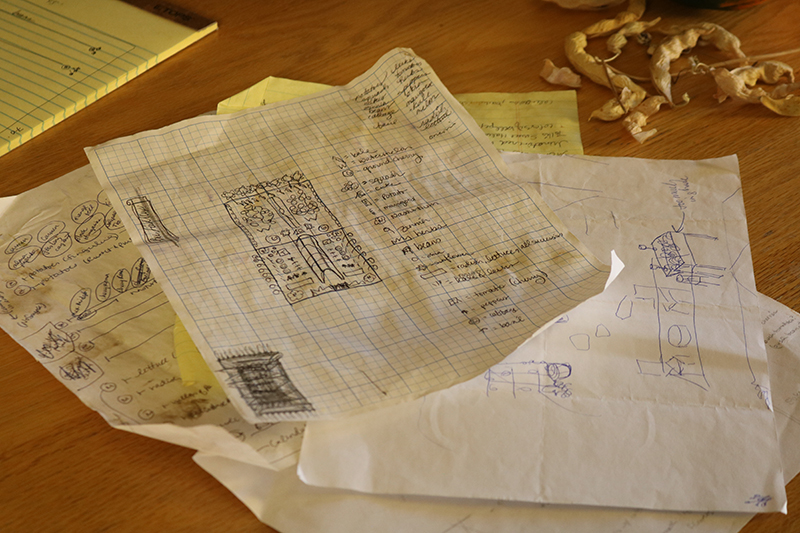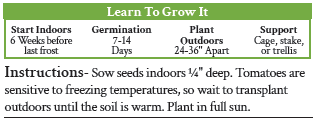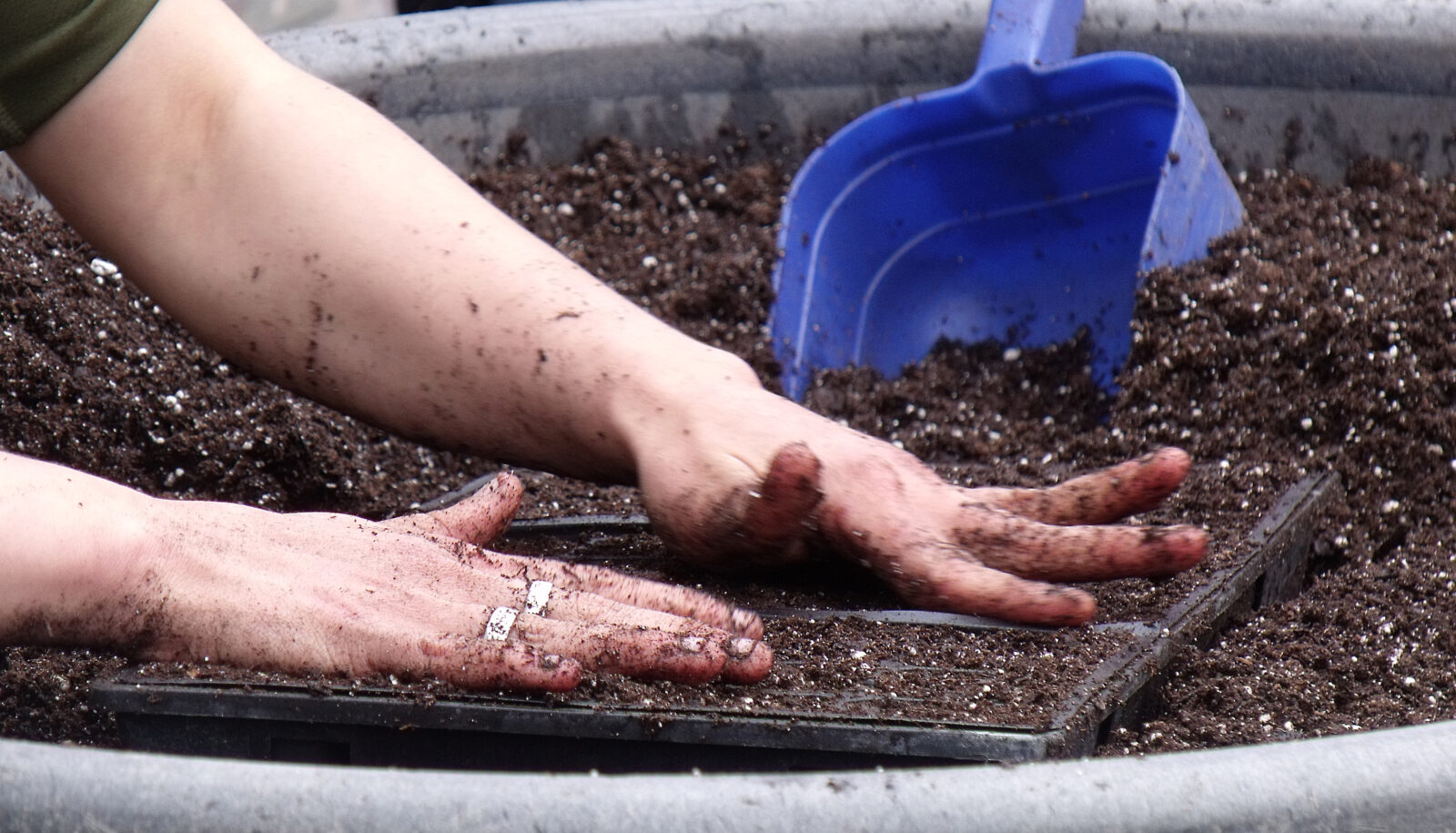
Seed Starting
There’s something almost magical in the process of seed starting. Planting a tiny, humble seed, and watching it transform into a plant with broad, green leaves, magnificent flowers, and delicious fruits.
Seed starting indoors has many benefits, including an earlier harvest and extending the growing season in short-season climates. Get ahead on your gardening by starting seeds indoors and producing your own transplants. With a little planning, a few supplies and tools, plus some know-how, you’ll be on your way to seed-starting success.
A little planning makes seed starting more efficient and will help set you up for success. Seeds that are typically started indoors include long season crops, like eggplants, okra, tomatoes, broccoli and kale. Some plants do not fare well as transplants or need to be transplanted at the right stage of growth so they aren’t stunted by stressors. Peas, beans, radishes, carrots, and corn perform best when they are direct seeded, straight into the garden.
 Consider how much space you have indoors to house your started seeds and how you will nurture the seeds as they grow indoors. Keep your outdoor space in mind, too. You’ll want to have enough transplants to adequately fill your garden plot. Take a few minutes to sketch out your garden and determine where you’ll plant each crop of transplants. Once you know how many transplants you’ll need, you can determine how many seeds to purchase and plant. It’s also smart to add a few extra seeds to account for things like seedling mortality.
Consider how much space you have indoors to house your started seeds and how you will nurture the seeds as they grow indoors. Keep your outdoor space in mind, too. You’ll want to have enough transplants to adequately fill your garden plot. Take a few minutes to sketch out your garden and determine where you’ll plant each crop of transplants. Once you know how many transplants you’ll need, you can determine how many seeds to purchase and plant. It’s also smart to add a few extra seeds to account for things like seedling mortality.
Research is also key during the planning phase. Seed packets often have guidelines about when to start seeds indoors, germination information, days to maturity, and other growing tips. But know that recommended seeding and start dates are just that: guidelines. Understand your local climate nuances (for example, a history of late, surprise frosts) and adjust as needed.

The right tools and supplies are also important for seed starting. Early plant nutrition is vital and the right potting mix/media will provide the right nutrients. Your seedlings will spend their first crucial weeks in their starting cells and they will need additional nutrition from compost or liquid fertilizer. Plants are like humans—if they don’t have the right nutrition, they are more susceptible to diseases and pest infestations.
But that doesn’t mean you have to splurge on potting mix, especially if you are seeding out something that will be transplanted in a week or two. You can also amend a mix with compost. When amending,
*For example, don’t use compost that’s been made from grass clippings that have been treated with broadleaf herbicides.
Container options for seed starting vary greatly and you can certainly get creative and even recycle and repurpose items like yogurt containers. Whatever container you choose, be sure it supplies adequate drainage (drill drainage holes if they aren’t present). A container also needs to hold its form through the entire seed starting process. Repeated watering can break down some transplant containers. Paper containers are best suited for seeds that are only started a week or two before they are transplanted.
Heat mats are helpful for seeds that get a boost from bottom heat such as peppers, melons, and tomatoes. Bottom heat helps establish the plant’s roots.
Planting the seed at the right depth is vital. Most seed packets will indicate the ideal depth, but a good rule of thumb is that the seed needs to be planted at a depth twice the diameter of the seed. Lightly pack the soil in the container. Compacted soil can lead to poor root growth. Lightly water the seeds after planting starting your hose or watering can away from the soil. A strong stream of water can wash away the soil and undo your careful sowing. Be sure to label your seeds.
Like outdoor plants, indoor seedlings need the right conditions and environment in order to thrive. As you care for your planted seeds, keep these factors in mind:
Temperature: Look at the back of the seed packet to see what temperature your seeds need. As a general guideline, the optimal temperature for germination is often 5-10 degrees warmer than the optimal temperature for growth. (Onions are one exception.)
Light: Placing seedling containers in front of a well-lit, south facing window may be sufficient. Rotate the containers to encourage even plant growth.
Supplemental light source: If natural light isn’t adequate, use an additional light source, like a grow light. The light needs to be close enough to the container so that the seedlings don’t get spindly, and adjustable, to accommodate the height of growing plants.
Water: Overwatering can be more detrimental than underwatering in a moist environment. Check the plants daily to assess their need for water. To do this, stick a wooden pencil half way into the cell, then remove it and check the pencil for visible moisture. If there is no visible moisture, it is time to water. It can also be helpful to understand the weight of the container and soil. Pick it up when dry and when wet and begin to learn the difference, allowing you to use this method of testing when water is needed. Overly wet soil can begin to grow mold while overly dry soil begins to look powdery.
Humidity: You can cover watered seeds with plastic domes to retain humidity. (Some people tuck containers in zippered plastic bags.) Remove the covering as soon as seeds have germinated (when you see green poking up from the soil) to allow for good airflow.
Fertilizer: Fertilize only as needed (typically four to six weeks after sowing, if you’re using a nutritive soil mix). If you are using compost and have sufficient soil in the pot, you don’t have to fertilize as soon or as often as you would if you are using a peat potting mix. (Peat-based potting mixes don’t have as many nutrients.) Don’t fertilize a plant you’ll be taking out in a week or so to harden off (the process before transplanting a plant into the garden).
Thinning seedlings is a necessary step to ensure healthy growth of plant starts and involves removing some of the seedlings sown too close to one another so that the strongest ones can thrive. If left in crowded environs, your seedlings will eventually suffer.
Thinning ensures the proper spacing of plants, either in cells inside or in the ground outside. If your seedlings are indoors, thin them out until there is only one left in each cell or pot. If your seedlings are direct sown outdoors, thin them according to the spacing requirements on the seed packet.
Read more about how to thin seedlings.
The growth phase just after germination is when problems tend to arise. Keep a close eye on your plants, especially for these common issues:
Pests: As you’re watering, check growth points and the undersides of leaves. Be especially mindful of pests if you have houseplants.
Damping off: Caused by botrytis, a fungus that occurs if humidity exceeds 85%. The condition comes on suddenly and is initially seen as seedling collapse. The stem withers and the seedlings topple over. The problem isn’t reversible, but can be prevented by maintaining good air circulation, not over-watering, and ensuring your soil medium is sterile. If damping off occurs, remove the affected seedling as soon as possible and maybe even some of the surrounding soil to ensure the fungus does not spread to nearby seedlings.
Leggy plants/spindly growth: Look at the lighting situation. If it’s been particularly cloudy or you live in a northern region, you may need to use supplemental lighting. High temperatures cause rapid growth and can also lead to leggy plants. Larger, older plants can also compete for light when they are close together. Space plants farther apart so that they don’t compete for resources.
Poor root growth: Poor drainage is one cause of poor root growth and can be prevented by using containers with adequate drainage. Too low temperatures and low fertility can also lead to poor root growth, as can compacted soil. When you are potting, make sure you don’t pack the soil too tightly.
Growing from Seed
Growing a garden from seed takes a little planning and care, but seeds want to grow. With a little know-how, a few tools, and some prep work, you can help them do it.
Growing from Seed, a free 20-page guide covers everything from selecting seeds to caring for new plants in your garden.
Keep Learning
Continue your learning with garden planning, plant care, and soil health.


